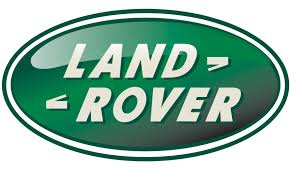L322 Range Rover System Description and Operation

CHARGING AND STARTING
DESCRIPTION AND OPERATION
86-1-3
Description
Charging and Starting System
The starting system on the vehicle comprises a 12V starter motor which drives the engine to start the combustion
process. The starter converts electrical energy into mechanical power. The vehicle electrical system must be capable
of supplying sufficient power to enable the engine to be cranked.
The charging system comprises a battery and an alternator. The battery must be of sufficient capacity to operate the
starter motor and operate the various vehicle electrical systems. The alternator charges the battery when the engine
is running and increases its output as demand on the battery increases.
The instrument pack incorporates a charge warning lamp which illuminates if the there is a low output or no output
from the alternator.
Alternator
The alternators used on the Td6 and V8 engines are different in construction, but their principles of operation are
similar. The alternator used on the V8 engine is located in a water cooled housing.
The alternators comprise a stator, a rotor, a rectifier pack and a regulator. A single output terminal is connected by a
heavy duty cable to the battery positive terminal, via the starter motor battery connection terminal. The alternator is
connected to earth via its mountings.
The rotor comprises a field winding, wound around an iron core and mounted on a shaft. The iron core has extensions
at each end which form North and South poles as current flows through the field winding. The rotor is located inside
the stator and is mounted on bearings for smooth running and to support the rotor due to the high side loading applied
by the drive belt tension.
The stator has three sets of coils made from copper wire. The three coil windings are connected in a 'star' connection,
where one end of the winding is connected to the other two windings. The output current is supplied from the opposite
end of each winding. Rotation of the rotor causes ac current to be produced in the coils.
The rectifier converts the ac current produced in the stator coils into dc (rectified) current required by the vehicle
electrical system. The rectifier comprises semi-conductor diodes mounted on a heatsink to dissipate heat. An equal
number of the diodes are on the negative and positive side, with the remaining diodes staying neutral. The rectifier
also prevents current flow from the battery to the alternator when the output voltage is less than the battery voltage.
The integrated regulator controls the output voltage from the alternator to prevent the battery from being overcharged
and to prevent the vehicle electrical systems from excessive voltage. The regulator, which is temperature related to
optimise battery charging, sets the maximum output voltage to a nominal 14.5V and varies the output voltage
depending on the state of charge of the battery and the loads required by the vehicle electrical systems.
The regulator has transistors which rapidly switch on and off to regulate the voltage output according to the voltage
sensed internally. The regulator also provides a signal output to the ECM which uses the signal to adjust the idle
speed under varying electrical loads.
Initially, the ignition switch supply provides an excitation current to the rotor at low alternator speeds via brushes which
contact slip rings at the end of the rotor shaft. As the alternator speed increases the alternator becomes self exciting.
